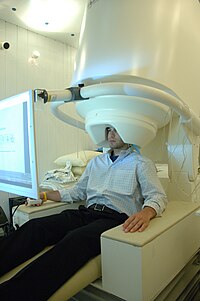
Photo from wikipedia
Successful surgery on drug-resistant epilepsy patients (DRE) needs precise localization of the seizure onset zone (SOZ). Previous studies analyzing this issue still face limitations, such as inadequate analysis of features,… Click to show full abstract
Successful surgery on drug-resistant epilepsy patients (DRE) needs precise localization of the seizure onset zone (SOZ). Previous studies analyzing this issue still face limitations, such as inadequate analysis of features, low sensitivity and limited generality. Our study proposed an innovative and effective SOZ localization method based on multiple epileptogenic biomarkers (spike and HFOs), and analysis of single-contact (MEBM-SC) to address the above problems. We extracted contacts epileptic features from signal distributions and signal energy based on machine learning and end-to-end deep learning. Among them, a normalized pathological ripple rate was designed to reduce the disturbance of physiological ripple and enhance the performance of SOZ localization. Then, a feature selection algorithm based on Shapley value and hypothetical testing (ShapHT+) was used to limit interference from irrelevant features. Moreover, an attention mechanism and a focal loss algorithm were used on the classifier to learn significant features and overcome the unbalance of SOZ/nSOZ contacts. Finally, we provided an SOZ prediction and visualization on magnetic resonance imaging (MRI). Ten patients with DRE were selected to verify our method. The experiment performed cross-validation and revealed that MEBM-SC obtains higher sensitivity. Additionally, the spike has better sensitivity while HFOs have better specificity, and the combination of these biomarkers can achieve the best performance. The study confirmed that MEBM-SC can increase the sensitivity and accuracy of SOZ localization and help clinicians to perform a precise and reliable preoperative evaluation based on interictal SEEG.
Journal Title: Bioengineering
Year Published: 2022
Link to full text (if available)
Share on Social Media: Sign Up to like & get
recommendations!